I'm working on a project using Sparkfun's IOIO for Android (https://www.sparkfun.com/products/10748) where power consumption is a concern. The IOIO board provides the phone with 500 mA charging if I'm correct, which is too much for continuous operation.
There's a trick I have in mind where I want to power the phone and the IOIO board separately from the same external power source (Of course the phone gets its 3.7v while the IOIO gets 5v). The catch here is that I want to cut off the 5v line on the cable from the IOIO to the phone, leaving the GND, Rx and Tx (Which are good enough for any serial transmission).

simulate this circuit – Schematic created using CircuitLab
(Middle lines are those in the micro-USB cable)
I'm kind of limited on USB cables so I don't want to make a mistake. Is my theory feasible with the IOIO? Or will the Android OS not detect it?
(NOTE: My project uses a magnetometer, so I can't resort to bluetooth which might interfere with the readings)